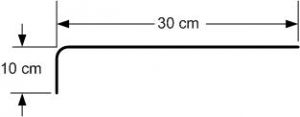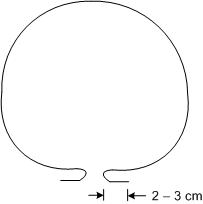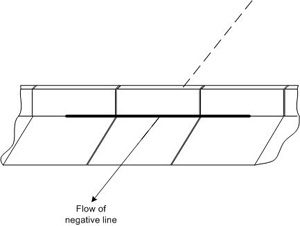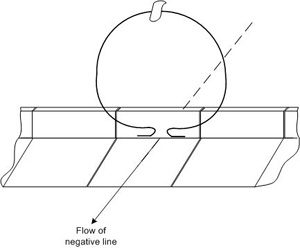
Tutorials - Physical Blocking of Geopathic Lines
Introduction
This tutorial explains how geopathic stress lines are located and blocked. The lines are Hartmann and Curry lines, from the respective networks. The blockage is done using metal rods or omega-shaped copper wire or L-shaped metal rods. The blockage can be done outside the property, if surrounded by grass, or inside an apartment, along floor panels. The effect is the same.
In this tutorial, it is taken for granted that the dowser knows about the different networks and is capable of handling dowsing instruments.
A Reminder
The electromagnetic networks are caused by a great metal core in the center of the earth. Rotation of this core, generates electromagnetic networks. The networks are many, some beneficial, some neutral and some harmful. We will block the harmful ones, namely: Hartmann and Curry.
Hartmann runs S-N and W-E while the Curry network is at 45 to the Hartmann network.
Remember that there is a direction of flow to the lines:
- Hartmann lines flow from West to East and South to North.
- Curry lines originate in the North and take a southern direction at 45, pretty much like an X.
Some General Guidelines
- To block lines, no matter the system used, the blockage must be done at 90 to the line and as close as possible to the center. That is where there is the most energy. Precision counts, as the Hartmann lines are 21 cm wide, with a 2 cm center, whereas the Curry lines can reach up to 50 cm width.
- Check the line presence prior to and after the blockage to insure full efficiency.
- If the line is not in parallel with the walls of the room, locate the blocking means, over the center of the line and recheck for blockage. Carefully move the block, until the line is no longer present when dowsing for it.
- Use parallel [L-rods] when first starting out or even as routine checks for seasoned dowsers. These rods are very sensitive and accurate.
Working Outside, in the Garden
If the home is surrounded by a garden, then the work is done outside. Identify directions (North) and start to locate the networks, each at a time. Stake each line with a marker (use wooden or metal stakes, with different colored ribbons).
Then, at each location, dig a small and narrow trench, at ninety degrees to the line. Make sure that you observe the direction of flow, otherwise you will be blocking lines for the neighbor. The trench is to be about 30 cm long and 5 cm wide. Dig to a depth of about 10 cm.
You can use thin metal rods, the type used for welding, or building steel, about 3 to 6 mm in diameter.
The rods are bent and inserted, as shown in the following figures.

Metal Rod Fabrication
1. Insert the long side of the rod, at about a 30-degree angle, into the trench (1). Then, push the rod into the ground so as to be flat in the trench (2).

Inserting the First Rod
2. Take another rod and do the same from the opposite end.

Inserting the Second Rod
3. This is how it looks, when done.

Done!
4. Cover the trench with earth.
blocking Lines Inside the House
Many people live in apartment buildings. Lines are then blocked in the rooms themselves. Two types of metal means are used for this purpose:
- Thin metal rods, as described above. These are steel, copper-plated 2.5 to 3 mm diameter rods, used for gaz welding. I use 50 cm lengths.
- Omega, made of electric copper wire, 12 AWG and cut to the exact length of a cubit (52.4 cm). It is better if the wire is insulated, so as not to turn green.

Omega Block
Whether you elect to use metal rods or omega blocks, depending on the availability of materials, the technique to be used is similar.
In each room identify the directions (North, etc ). According to the direction of flow of the type of line, identify the wall to follow in the apartment. Locate the Hartmann and Curry lines and label the locations. Use the blocking means selected and place it over the line center. See the figures hereafter.
For metal rods: place the rod behind carpet pals, under wooden panels running along the walls, on the floor. This will hide the rods from view and prevent them from being moved inadvertently. As an alternate method, lay the metal rod along the junction of the floor tiles and the wall panels. Secure in place with Scotch tape.
For omega blocks: lay the omega, touching the floor, across the line (riding on the line) and tape to the wall.

Blocking Lines Using Metal Rods

Blocking Lines Using an Omega




